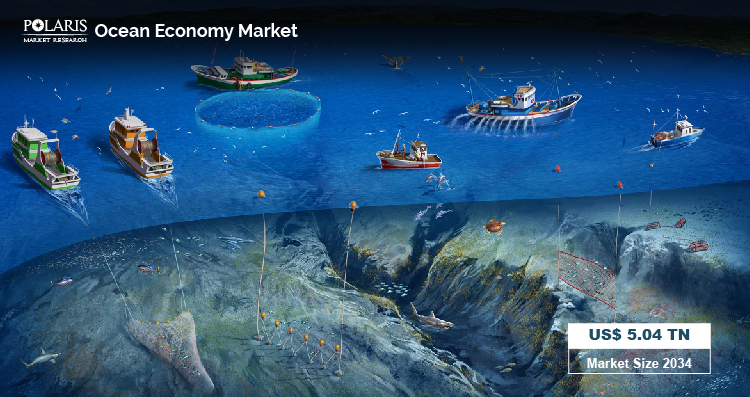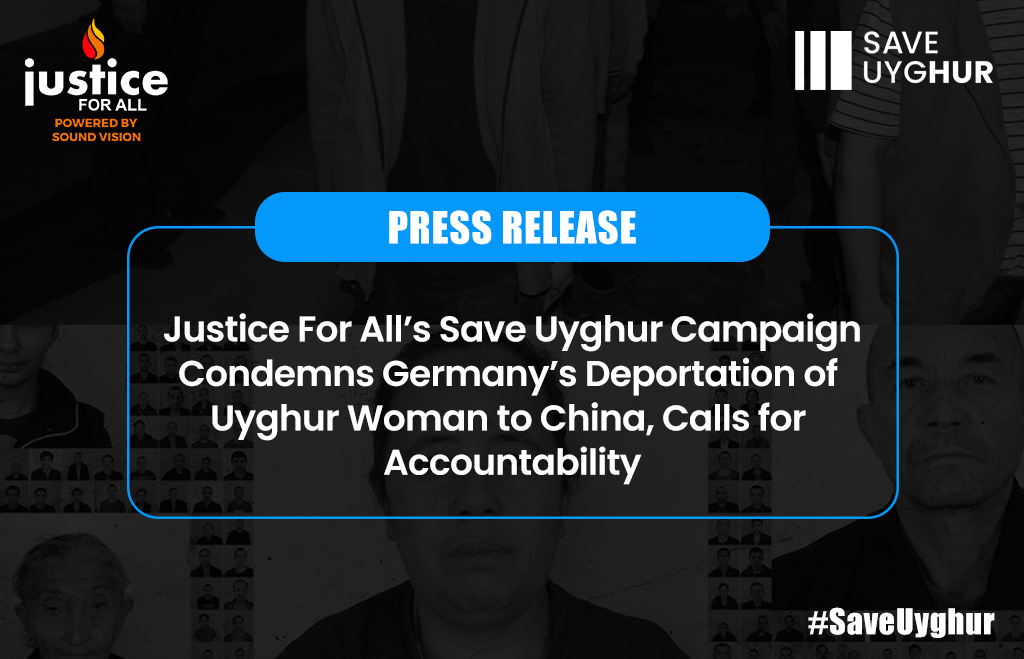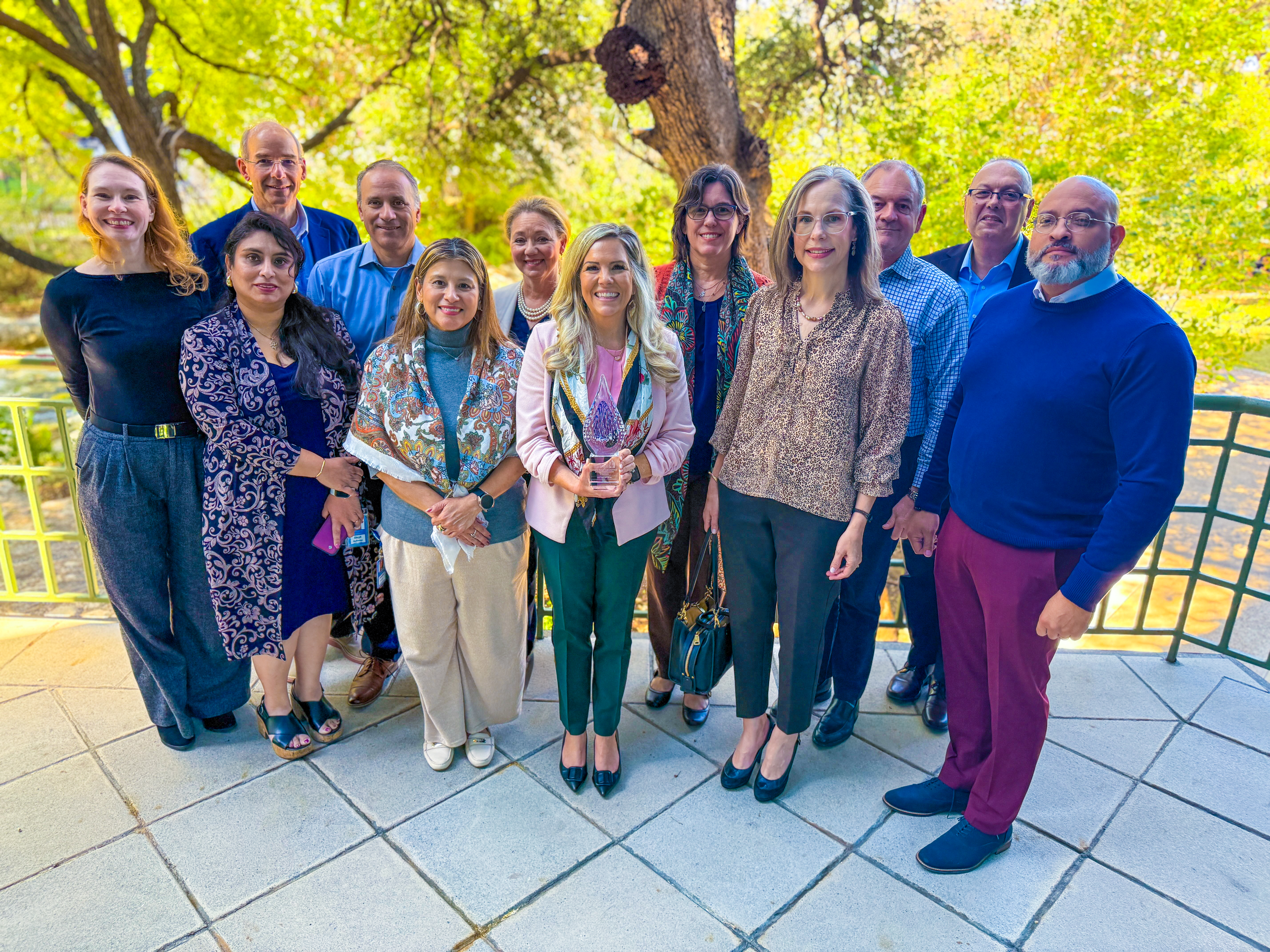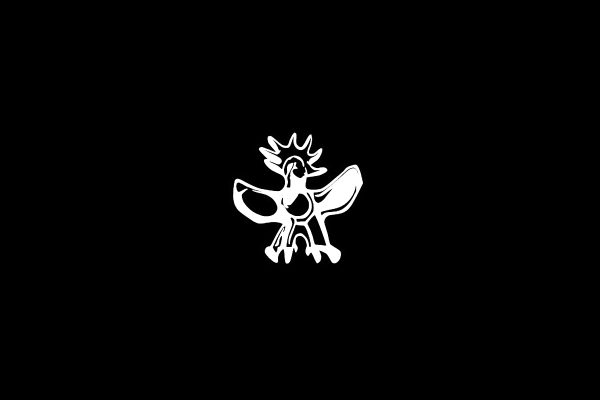Blue Economy Market Size, Share | CAGR of 6.4% – Market.us

Report on the Global Blue Economy Market and its Alignment with Sustainable Development Goals
The Blue Economy, defined as the sustainable utilization of ocean resources for economic growth, improved livelihoods, and jobs while preserving the health of ocean ecosystems, is a critical framework for achieving the United Nations Sustainable Development Goals (SDGs). This report analyzes the market dynamics, growth drivers, and challenges of the Blue Economy, with a specific focus on its contributions to global sustainability targets.
Market Overview and Projections
The Global Blue Economy market is projected to experience significant growth, expanding from an estimated USD 2,845 billion in 2024 to USD 5,291 billion by 2034. This represents a Compound Annual Growth Rate (CAGR) of 6.4% for the forecast period of 2025-2034. In 2024, North America holds a dominant market position with a 32.7% share, valued at approximately USD 930.3 billion.
- Global Market Forecast (2034): USD 5,291 Billion
- CAGR (2025-2034): 6.4%
- Leading Region (2024): North America (32.7% share)
- Leading Segment by Type (2024): Offshore Oil & Gas (36.8% share)
- Leading Segment by Sector (2024): Public Sector (63.7% share)
The Blue Economy’s Contribution to Sustainable Development Goals (SDGs)
The principles of the Blue Economy are intrinsically linked to the 2030 Agenda for Sustainable Development. Its growth is instrumental in advancing several key SDGs through the sustainable management of marine and coastal resources.
Core Alignment with SDG 14: Life Below Water
The fundamental objective of the Blue Economy is the sustainable use of oceans, seas, and marine resources, directly supporting all targets under SDG 14. Key activities include:
- Implementing sustainable fisheries and aquaculture practices to end overfishing and ensure food security.
- Promoting marine conservation and combating pollution through stricter regulations and advanced waste treatment technologies.
- Investing in blue carbon projects, such as the restoration of mangroves and seagrasses, which act as vital carbon sinks and enhance marine biodiversity.
Advancing Economic and Social Goals
The Blue Economy is a significant driver for other critical SDGs:
- SDG 8 (Decent Work and Economic Growth): The sector is a major source of employment. Over 3 billion people depend on marine and coastal biodiversity for their livelihoods. In the EU alone, the Blue Economy employed 4.82 million people in 2022, demonstrating its capacity to create jobs and stimulate inclusive economic growth.
- SDG 7 (Affordable and Clean Energy): The expansion of marine renewable energy, particularly offshore wind, is central to the global energy transition. Projects like the Dogger Bank Wind Farm (UK) are pivotal in increasing the share of renewable energy in the global energy mix.
- SDG 2 (Zero Hunger): Sustainable aquaculture and fisheries are essential for global food security, providing a critical source of protein for billions. The market’s focus on sustainable practices helps ensure the long-term viability of these food sources.
- SDG 9 (Industry, Innovation, and Infrastructure): Technological advancements are transforming the sector. The development of smart ports, autonomous shipping, marine biotechnology, and real-time ocean monitoring systems builds resilient infrastructure and fosters innovation.
- SDG 13 (Climate Action): The sector contributes to climate mitigation and adaptation by decarbonizing maritime transport, which accounts for 13% of transport-related emissions, and by scaling up blue carbon initiatives that sequester significant amounts of CO₂.
Market Drivers and Opportunities
Expansion of Global Trade and Shipping
Over 80% of global trade by volume is transported by sea, making maritime logistics a cornerstone of the world economy and a key driver for the Blue Economy. This growth fuels investment in port infrastructure and green shipping technologies, aligning with SDG 9 and SDG 13. Companies are increasingly investing in low-emission vessels to meet international decarbonization targets.
Integration of Digital Technologies
A significant opportunity lies in the digitalization of marine sectors. The application of AI, IoT, and blockchain enhances operational efficiency, safety, and sustainability. Smart ports optimize cargo flow, autonomous vessels reduce fuel consumption, and blockchain improves traceability in seafood supply chains, directly combating illegal fishing and supporting SDG 14.
Growth in Marine Renewable Energy
The global shift towards clean energy presents a major growth opportunity. Government policies and private investment are accelerating the deployment of offshore wind, tidal, and wave energy projects. This transition is critical for achieving SDG 7 and reducing reliance on fossil fuels.
Restraints and Challenges
Geopolitical Tensions and Governance Gaps
Maritime territorial disputes, such as those in the South China Sea, create investment uncertainty and hinder international cooperation required for sustainable ocean management. These conflicts pose a risk to achieving SDG 16 (Peace, Justice, and Strong Institutions). Furthermore, fragmented governance and a lack of integrated marine spatial planning challenge the coordinated management of ocean resources, potentially undermining the objectives of SDG 14.
Environmental Degradation
Legacy issues such as marine pollution, over-extraction of resources, and the impacts of climate change continue to threaten the health of ocean ecosystems. Addressing these challenges requires robust regulatory frameworks and significant investment in conservation and restoration efforts.
Regional and Sectoral Analysis
Geographic Landscape
- North America: Leads the market with strong federal investment in sustainable fisheries, marine biotechnology, and offshore renewable energy, contributing to SDG 9 and SDG 14. The U.S. marine economy supported over 2.3 million jobs in 2022.
- Europe: A pioneer in marine renewable energy (SDG 7) and strong regulatory frameworks under its Blue Economy Strategy.
- Asia-Pacific: A rapidly expanding region driven by industrial fishing, aquaculture (SDG 2), and shipping. China is a dominant force, investing heavily in port development and marine technology.
- Latin America: Focuses on sustainable fisheries and offshore resources.
- Middle East & Africa: Gaining traction through investments in desalination and strategic maritime trade.
Analysis by Type
The market is segmented into diverse industries, each with a distinct role in the Blue Economy.
- Offshore Oil & Gas: Remains the largest segment but faces pressure to transition towards lower-carbon operations.
- Marine Renewable Energy: A fast-growing segment critical for achieving SDG 7.
- Fisheries and Aquaculture: Essential for global food security (SDG 2) and livelihoods, with a growing emphasis on sustainable practices (SDG 14).
- Shipping and Maritime Transport: The backbone of global trade, with a focus on decarbonization to meet SDG 13 targets.
Analysis by Sector
The Public Sector holds a dominant 63.7% market share, reflecting the critical role of governments in regulation, research, and infrastructure investment to guide the Blue Economy towards sustainability goals. Public-Private Partnerships (PPPs) are increasingly important for financing large-scale projects like port modernization and renewable energy installations.
Key Market Segments
By Type
- Offshore Oil & Gas
- Marine Fisheries
- Aquaculture (Marine and Freshwater)
- Marine Renewable Energy
- Offshore Wind Energy
- Tidal and Wave Energy
- Ocean Thermal Energy Conversion (OTEC)
- Shipping and Maritime Transport
- Commercial Shipping
- Freight and Logistics
- Desalination and Water Treatment
- Ports and Harbors Infrastructure
- Others
By Sector
- Public Sector
- Private Sector
- Public-Private Partnerships
Competitive Landscape
The market features a diverse range of players leading innovation and sustainable practices across different segments. These companies are instrumental in driving the technological and operational shifts necessary to align economic activities with environmental stewardship.
Top Key Players in Blue Economy Market
- Orsted A/S
- Maersk Line
- Vestas Wind Systems
- Siemens Gamesa Renewable Energy
- Royal Dutch Shell
- DNV GL
- Bluewater Energy Services
- ABB Ltd.
- Wärtsilä Corporation
- Marine Harvest (Mowi)
- Cargill Aqua Nutrition
- Iberdrola
- E.ON SE
- Deep Green
- Sibelco
- Other Major Players
Recent Developments
- January 2025: Orsted finalized the sale of minority stakes in four UK offshore wind farms to Brookfield for GBP 1.745 billion, a move designed to secure capital for future renewable energy projects, furthering SDG 7.
- December 2024: DP World launched the first MENA Blue Bond, a $100 million instrument to finance sustainable marine transport and ocean-positive initiatives, marking a significant step in mobilizing capital for SDG 14.
Analysis of Sustainable Development Goals in the Blue Economy Market Article
1. Which SDGs are addressed or connected to the issues highlighted in the article?
-
SDG 14: Life Below Water
This is the most central SDG, as the entire article revolves around the “Blue Economy,” defined as the “sustainable development and use of oceanic and coastal resources.” It explicitly mentions that frameworks like the UN SDGs “specifically target oceans sustainability.” The article discusses fisheries, aquaculture, marine pollution from shipping, and the conservation of marine ecosystems through blue carbon projects.
-
SDG 8: Decent Work and Economic Growth
The article extensively covers the economic aspects of the Blue Economy, including its market size (expected to be worth USD 5,291 Billion by 2034), contribution to GDP ($361 bn in the U.S. in 2022), and significant job creation. For example, it states the EU blue economy employed “4.82 mn people” in 2022 and the U.S. marine economy supported over “2.3 mn jobs.”
-
SDG 7: Affordable and Clean Energy
The report highlights the rapid growth of “offshore renewable energy” as a key component of the Blue Economy. It specifically points to large-scale offshore wind projects like the “Dogger Bank Wind Farm in the UK” and the “Vineyard Wind project in Massachusetts,” which contribute to the transition to clean energy.
-
SDG 13: Climate Action
The article connects the Blue Economy to climate change mitigation. It notes that shipping contributes “13% of transport-related greenhouse gas emissions” and mentions national goals to reduce these emissions, such as Norway’s target of a “40% emissions reduction by 2030.” Furthermore, it discusses “blue carbon projects” and the role of marine ecosystems in “carbon sequestration” as a tool to achieve “global net-zero goals.”
-
SDG 9: Industry, Innovation, and Infrastructure
The article emphasizes the role of “technological innovation” in reshaping the Blue Economy. It lists emerging technologies like “autonomous underwater vehicles, marine robotics, remote sensing,” and “smart port technologies.” It also covers the development of resilient infrastructure, including “ports and harbors infrastructure,” “offshore wind farms,” and “decarbonized vessels.”
-
SDG 2: Zero Hunger
The report links ocean health and resources directly to “food security.” It states that “marine fisheries and aquaculture… are critical for global food security” and that over “3 billion people relying on oceans for their livelihood.”
-
SDG 17: Partnerships for the Goals
The article underscores the importance of collaboration. It mentions the role of “Public-Private Partnerships (PPPs)” in funding high-capital projects, the use of financial instruments like “blue bonds and blended finance models,” and the need for international cooperation to overcome geopolitical tensions and governance gaps.
2. What specific targets under those SDGs can be identified based on the article’s content?
-
Target 14.7: By 2030, increase the economic benefits to Small Island developing States and least developed countries from the sustainable use of marine resources, including through sustainable management of fisheries, aquaculture and tourism.
The article’s core theme is increasing the economic value derived from ocean resources. It quantifies this with market size projections (“USD 5,291 Billion By 2034”), regional revenue (“North America… generating over USD 930.3 billion”), and the economic contribution of sectors like coastal tourism, which contributed “33% to GVA” in the EU.
-
Target 14.a: Increase scientific knowledge, develop research capacity and transfer marine technology…
The article highlights that “scientific and technological advancements” are a top driving factor. It details innovations such as “autonomous underwater vehicles, marine robotics, remote sensing for real-time ocean monitoring,” and investments in “oceanographic research” by institutions like Woods Hole Oceanographic Institution.
-
Target 8.5: By 2030, achieve full and productive employment and decent work for all women and men…
The report provides specific employment figures, demonstrating the Blue Economy’s role in job creation. It notes the EU blue economy “employed 4.82 mn people” and the U.S. marine economy “supported over 2.3 mn jobs.”
-
Target 8.9: By 2030, devise and implement policies to promote sustainable tourism that creates jobs and promotes local culture and products.
The article identifies “coastal tourism” as a leading sector in the EU, employing “54% of the workforce” in the blue economy. It also states that “even small growth in sustainable coastal tourism can boost related sectors and strengthen national economies.”
-
Target 7.2: By 2030, increase substantially the share of renewable energy in the global energy mix.
This target is addressed through the discussion of “marine renewable energy,” which is “rapidly gaining momentum.” The article provides concrete examples of offshore wind projects in the U.S. and Europe that contribute directly to increasing the share of renewable energy.
-
Target 13.2: Integrate climate change measures into national policies, strategies and planning.
The article shows this integration through examples like Norway’s national policy to achieve “full climate neutrality for its fleet by 2050” and the U.S. government’s “USD 3 bn pledge” for offshore wind. The growth of “blue carbon projects” in countries like Australia and Kenya is another example of integrating climate measures into economic and environmental policy.
-
Target 9.4: By 2030, upgrade infrastructure and retrofit industries to make them sustainable…
This is reflected in the push for “green shipping corridors,” investments in “methanol-powered and LNG-fueled vessels” by companies like Maersk, and the development of “smart port technologies” to “reduce emissions.”
3. Are there any indicators mentioned or implied in the article that can be used to measure progress towards the identified targets?
Yes, the article contains several quantitative and qualitative indicators that can be used to measure progress:
-
Economic Value and Growth:
Indicators include the overall market size (USD 2,845 billion in 2024), projected growth (CAGR of 6.4%), Gross Value Added (EUR 250.7 bn for the EU blue economy), and contribution to national GDP ($361 bn in the U.S.). These measure progress towards Target 14.7.
-
Employment Numbers:
Specific figures like the 4.82 million people employed in the EU’s blue economy and the 2.3 million jobs supported by the U.S. marine economy serve as direct indicators for Target 8.5.
-
Greenhouse Gas Emissions:
The article provides a baseline figure that “shipping contributes 13% of transport-related greenhouse gas emissions” and a specific national target of a “40% emissions reduction by 2030″ from Norway. These are key indicators for Target 13.2.
-
Food Production Volume:
Metrics such as China accounting for “more than 35% of global fish production” and aquaculture contributing to “over 50% of seafood consumed globally” are indicators for food security under SDG 2.
-
Investment in Sustainability:
The launch of a “$100 million MENA Blue Bond” by DP World is a financial indicator for investment in sustainable marine projects, relevant to Target 17.3.
-
Share of Global Trade:
The statistic that “more than 80% of world trade by volume… [is] transported by sea” is an indicator of the scale and importance of the maritime transport sector, relevant to SDG 9.
-
Carbon Sequestration Potential:
The potential of blue carbon ecosystems to reduce emissions by up to “1.4 billion tonnes of CO₂ annually” is a qualitative and quantitative indicator for nature-based climate solutions under SDG 13.
4. Table of SDGs, Targets, and Indicators
| SDGs | Targets | Indicators Identified in the Article |
|---|---|---|
| SDG 14: Life Below Water |
14.7: Increase economic benefits from the sustainable use of marine resources.
14.a: Increase scientific knowledge and transfer marine technology. |
– Blue Economy Market size (USD 2,845 billion in 2024). – Gross Value Added (GVA) of EU blue economy (EUR 250.7 bn). – Mention of technologies like autonomous underwater vehicles, remote sensing, and marine robotics. – Investment in oceanographic research institutions. |
| SDG 8: Decent Work and Economic Growth |
8.5: Achieve full and productive employment.
8.9: Promote sustainable tourism. |
– Number of jobs supported in the U.S. (2.3 million). – Number of people employed in the EU (4.82 million). – Coastal tourism’s share of employment in the EU blue economy (54%). |
| SDG 7: Affordable and Clean Energy | 7.2: Increase the share of renewable energy. |
– Development of large-scale offshore wind farms (e.g., Dogger Bank, Vineyard Wind). – Growth in the marine renewable energy market segment. |
| SDG 13: Climate Action | 13.2: Integrate climate change measures into policies. |
– Shipping’s contribution to transport GHG emissions (13%). – Norway’s national target for emissions reduction (40% by 2030). – Growth of blue carbon projects for carbon sequestration. |
| SDG 9: Industry, Innovation, and Infrastructure | 9.4: Upgrade infrastructure and industries for sustainability. |
– Investment in smart port technologies and automated container handling. – Development of methanol-powered and LNG-fueled vessels. – Volume of global trade transported by sea (over 80%). |
| SDG 2: Zero Hunger | 2.4: Ensure sustainable food production systems. |
– Percentage of global fish production from China (over 35%). – Percentage of seafood from aquaculture (over 50%). – Number of people reliant on oceans for livelihood (over 3 billion). |
| SDG 17: Partnerships for the Goals | 17.17: Encourage effective public, public-private and civil society partnerships. |
– Use of Public-Private Partnerships (PPPs) for high-capital projects. – Creation of specialized investment instruments like blue bonds (e.g., $100 million MENA Blue Bond). |
Source: market.us

What is Your Reaction?
 Like
0
Like
0
 Dislike
0
Dislike
0
 Love
0
Love
0
 Funny
0
Funny
0
 Angry
0
Angry
0
 Sad
0
Sad
0
 Wow
0
Wow
0












































































